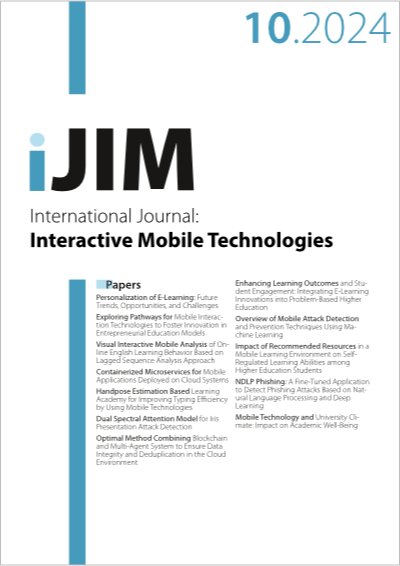Dual Spectral Attention Model for Iris Presentation Attack Detection
DOI:
https://doi.org/10.3991/ijim.v18i10.46981Keywords:
Presentation attacks, Biometric, Iris recognition, Attack detection, Spoofing, Detection techniquesAbstract
The widespread use of iris recognition systems has led to a growing demand for enhanced security measures to counter potential iris presentation attacks, also known as anti-spoofing. To enhance the security and reliability of iris recognition systems, researchers have developed numerous methods for detecting presentation attacks. Most of these methods lack precision in detecting unknown attacks compared to known attacks. In addition, most literature on iris presentation attack detection (PAD) systems utilizes near-infrared (NIR) samples as inputs. These samples produce superior-quality and robust images with less reflection in the cornea of the eye. Despite this, due to the widespread use of smartphones and the necessity for unsupervised identity verification, visible-light samples play a crucial role in detecting presentation attacks. These samples can be easily captured using smartphone cameras. In this paper, a dual-spectral attention model has been developed to train a unified model for multiple real-world attack scenarios. Two different scenarios were tested. In the first scenario, the model was trained as a one-class anomaly detection (AD) approach, while in the second scenario, it was trained as a normal two-class detection approach. This model achieved the best result for the attack presentation classification error rate (APCER) of 4.87% in a one-class AD scenario when tested on the attack dataset, outperforming most studies on the same test dataset. These experimental results suggest that future research opportunities in areas such as working with visible light images, using an AD approach, and focusing on uncontrolled environment samples and synthetic iris images may improve iris detection accuracy.
Downloads
Published
How to Cite
Issue
Section
License
Copyright (c) 2024 Amal Al-Shargabi, Noura S. Al-Rajeh

This work is licensed under a Creative Commons Attribution 4.0 International License.



